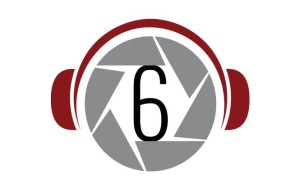World Cup 2010 – Groups Overview: Part Three
14 min read There are 8 different groups (group A – group H) parsed out to 4 teams from all different countries that qualified and they are drawn at random. In the next few months, I will analyze each of the groups with a quick synopsis of the teams and the common thought of who would move on and who would be packing for home in the first round of the tournament.
There are 8 different groups (group A – group H) parsed out to 4 teams from all different countries that qualified and they are drawn at random. In the next few months, I will analyze each of the groups with a quick synopsis of the teams and the common thought of who would move on and who would be packing for home in the first round of the tournament.
Group E
Netherlands (NED)
Nickname: The Flying Dutchmen/Clockwork Orange/Oranje
In 1905, Holland played their first international soccer game against Belgium and this was seemingly the start of The Flying Dutchmen’s dominance of international soccer. They first entered the World Cup in 1934, playing one game and lost 3-2 to Switzerland. In the 1938 World Cup, which was hosted by France, the end results were the same, a loss to Czechoslovia 3-0. After that, The Flying Dutchmen flew off into the setting sun and were not seen in the World Cup again until 1974. In the 1950’s there was a change in the Dutch philosophy of soccer which resulted in the formation of a professional league and changes to the national team selection which saw improvements to the Holland national team.
In the 70’s the creation of Totaalvoetbal, or Total Football, was the beginning of major improvements in the Dutch team and the professional leagues. Total Football is the theory that any player on the field can play any position. If a midfielder ran down the field with the ball, another player would be able step into that position, keeping the integrity of the formation. With this change the league team Ajax won many league titles, losing only one game during the 1971-1972 season. The World Cup in 1974 saw the Flying Dutchmen flying high, defeating Argentina and Brazil to reach the finals. However, their fluid play was no match for the West German defensive wall and they lost 2-1. The following World Cup saw Holland back in the finals, where they again lost to the host country, Argentina 3-1. Since the 1970’s Holland has failed to qualify for the World Cup 3 out of 8 tries. In 2002, they were the highest ranked team that failed to qualify.
Holland flew through the qualifying for this World Cup, being the first team to qualify for the Cup. Out of 8 games, Holland only conceded 2 goals, winning all 8 games. However, in their last 5 games, they have won 2 and tied 3. The three ties were scoreless draws. Being in the group with Denmark, Cameroon and Japan may look easy, but it will not be. A team filled with fairly young and experienced players who play in leagues all around the world, they are favored to easily move through to the next round. The Flying Dutchmen have many players to watch out for, including midfielders Mark Von Bommel, Rafael van der Vaart and Wesley Sniejder, while forwards Robin van Persie, Arjen Robben and Dirk Kuyt up front scoring goals. Between those six players, they have combined for 75 international goals.
Cameroon (CMR)
Nickname: The Indomitable Lions
In the realm of soccer, Cameroon is a relatively young team; however they are Africa’s most successful national team. The first game they played was against Somalia, in 1960, where they dominated Somalia 9-2. They qualified for the Africa Cup of Nations in 1970, but were eliminated in the first round. Two years later, Cameroon finished third in the Africa Cup of Nations. Their next trip to the African Cup wouldn’t be for another 10 years. In 1982, Cameroon qualified for their first World Cup and in their first game, held onto a surprising 1-1 tie against Italy. Even though Cameroon went undefeated in the first round of the World Cup, they would not be able to move on, having 3 ties and scoring only one goal.
For the 1990 World Cup, Cameroon qualified and became the first team to move on to the knock out round with a negative goal difference. They also shocked the world by beating Argentina 1-0 then beat Romania 2-1, but lost to the Soviet Union, 4-0. In the knock out round, Cameroon beat Colombia then moved on to the quarter finals, facing England. In the first half England scored and seemed to be onwards to an easy victory, until the second half. Cameroon came back with a goal in the 61st minute then four minutes later, scored again, leading England 2-1. However, England was not going let an upstart like Cameroon upset the balance of the soccer world and managed to come back, erasing what would have been one of the greatest upsets in World Cup history. Hoping to continue on with the success, Cameroon qualified for the next two World Cups, but was shown the door early in both competitions. For the 2006 World Cup, Cameroon seemed to be assured to qualify but in the last game, they tied with Egypt, while another game caused their elimination.
Cameroon started their qualifying for the 2010 World Cup with a surprising loss to Togo, which caused the firing of head coach Otto Pfister and eventually Paul Le Guen was hired. With this new hiring, Cameroon’s spirits were raised and they went through winning the rest of the games, to qualify for the fifth time. Cameroon’s team is filled with players that play in the top leagues around the world, but will rely heavily on forward Samuel Eto’o and veteran defender Rigobert Song. Rigobert Song cousin Alexandre Song will be another prominent figure in the Defensive midfield position, having a stellar season with Arsenal this season. Cameroon is expected to finish second, in this group, and move on to the knock out rounds with the Dutch.
Denmark (DEN)
Nickname: Danish Dynamite/The Olsen Gang
Denmark broke onto the international soccer scene in 1908 as an official team; however, an amateur team was recorded to have the first, unofficial, victory in 1906 at the Intercalated Olympics. In 1908, in their first official tournament, they finished second in the Olympics, with a professional team. Four years later, in the 1912 Olympics, they again finished second. During the “Pre-World Cup” years, Denmark was a pretty good team and had some successes, but from 1930 onwards, they had been unable to match any of the success they had achieved, only receiving a bronze medal in the 1948 Olympics. Soccer didn’t have as strong a hold with the Danes, as most of the best players would move over seas to make their living, while foreign born Danes were not allowed on the national soccer team. During the 1970’s, Denmark decided to take soccer more seriously and began allowing professional players to play on the national team as well as the foreign born Danes. In 1978, the Danish professional soccer league was formed.
For the 1982 World Cup, Denmark had an impressive showing during the qualifying, beating the eventual World Cup Holders, Italy, 3-1. Despite this success they were unable to qualify, even though they held 8 points in the qualifying round, it was not good enough. In 1984, Denmark qualified for their first international tournament, since 1964, qualifying for Euro 1984. Continuing this success, Denmark qualified for their first World Cup, in 1986. They were a surprise team, sweeping the first round, but were severely beaten by Spain, 5-1 in the knock out rounds. After the seeming up rise in Danish soccer, further success would elude them as they entered another transitional period. In the 1998 World Cup, they reached the knock out round. When Denmark beat Nigeria 4-1, some say that was the best soccer Denmark has ever played, then lost to Brazil, the farthest Denmark has ever gone in the World Cup play.
Qualifying for the 2010 World Cup seemed to be easy, even though they were paired with powerhouse Portugal, Demark finished on top. One of the things that Denmark must focus on, if they plan to move further than the first round, is stability on the field. That stability seems to be growing stronger, under the tutelage of veteran coach Morten Olsen and many players playing in the premier leagues in Europe. Veteran forwards Jon Dahl Tomasson and Dennis Rommedahl will be relied on for their leadership on the field. As strong and experienced as their forwards are, the weakest link may prove to be the defense as only three players have played in more than 10 games for the national team. Although the qualifying seemed easy, Denmark will need to carry the confidence and stability they played with in the Qualifiers, if they are to move on to the knockout stages.
Japan (JPN)
Nickname: Samurai Blue
Japans very first game came against China, in 1917, which resulted in a lopsided victory for China, 5-0. Throughout the years, Japan found little success in soccer, until their first notable achievement in the 1968 Olympics, where they won a Bronze medal. With this success, the interest in soccer grew, however, without a domestic league, the resulting success was minimal and they would not qualify for the World Cup for 30 more years. In 1991, the semi-pro Japanese soccer league was disbanded. This was done in order to form the J-league, a domestic professional soccer league. This was partially done to raise the popularity of the sport as well as to strengthen its national team. However, this change did not assist in Japan qualifying for the 1994 World Cup, barely missing out after losing to Iraq.
Japan’s first experience with the World Cup was in the 1998 World Cup, where they lost all three games. Although they played well, they lost to Argentina and Croatia, 1-0. Their next opponent, Jamaica, expectations were not met and they lost unexpectedly, 2-1. Japan co-hosted the 2002 World Cup with South Korea and things looked a lot better for the Samurai Blue’s. They came in, beating Russia 1-0 and Tunisia 2-0 but were sent packing in the knockout round, losing to Turkey 1-0. In their third consecutive qualification to the World Cup, they experienced a major let down losing all the games and not advancing. Although Japan has seen considerably more success in the Asian Cup, winning the trophy three times in the last four finals, success on the world stage has been out of their reach.
Although many of the players are from the domestic leagues, there are a couple of players that play in other leagues around the world. They will be lead by veteran captain Yuji Nakazawa in the defense, while Makoto Hasebe, midfielder who plays for Wolfsburg will be relied on heavily, as well as leading goal scorer, Shunsuke Nakamura in the midfield. Although, many of these players have played with each other for a while, on the national team, they are not expected to move on to the knock out rounds, though not impossible. If they play with the heart of a samurai and ignore the ghosts of their past failings, they may finally find some success as the world watches.
Group F
Italy (ITA)
Nickname: Azzurri
The Azzurri’s first unofficial soccer game was against France on May 15th 1910 where they defeated the French in a resounding win 6-2. This victory was gained without the help of some of the best players from the best team in the Italian league. When the game was over, the Italian team was showered with gifts from the 4,000 fans, packs of cigarettes that were thrown to the field. Their success followed them into their first official tournament, the 1928 Olympics, where they left with the bronze medal. Italy declined to participate in the first World Cup in 1930, but participated in the 1934 World Cup, where they won it all. Italy entered into the 1938 World Cup as the World Champions and they were successful in defending that title, winning the World Cup for a second straight time.
Tragedy struck the Italians in 1949, when they lost ten of the starting eleven, when the plane they were travelling on crashed, due to turbulent weather. Participating in the 1950 World Cup, they still struggled with the loss of so many players, and a long arduous boat ride to Brazil, Italy was knocked out in the first round. In the 1954 World Cup, Italy did not move past the first round and in 1958, Italy did not qualify, for the first time. This would be the last time that Italy failed to qualify for the World Cup. The next two World Cups saw similar results as the 1950 and 1954 World Cup, being knocked out in the first round. In 1978 World Cup, success returned to them as they finished Second, losing to Brazil 4-1. In the 2006 World Cup, the Azzurri were mired in scandals, reports of match fixing in the Italian pro leagues. Although a great team, they were not expected to do well, facing these troubles at home. However, fighting through the reports, Italy proved the strongest and hoisted the World Cup for a fourth time.
Being the current “Title holders” Italy has their hearts set on winning their fifth title, entrenching them as one of the greatest soccer nations in the world. Italy will be relying on players like Gianluigi Buffon, arguably one of the best goal keepers in the world along with veteran defenders Fabio Cannavaro and Gianluca Zambrotta for strength in the back. Midfielders Mauro Camoranesi and Gennaro Gattuso and a front line with Vincenzo Iaquinta and youngster Giuseppe Rossi leading the attack, they hope hoist the Cup a fifth time, matching that of Brazil. Many feel, though, that this may be the last shot for many of the players on the current squad. Regardless of their age, they have a goal set in mind and are strong favorites to win the World Cup a fifth time. If father time holds back, Italy should have an easy time moving past the first round of this World Cup.
Paraguay(PAR)
Nickname: Guaranies
In 1906, Paraguay created the federation to oversee soccer in the country. This was done, in part by the “Father of Paraguayan Football” William Paats, a Dutchman, who was concerned at the lack of organized sports in Paraguay. When a club team in Argentina sent an invitation to play a game to the Paraguayan federation, the national team was formed in 1910 and the match ended in a 0-0 draw. As more invitations came for domestic and international games, the federation decided to make the National Team official, with the jersey colors Red and White for their national flag. Their first official tournament that they participated in was the 1921 Copa America and from 1919 till 1921, they participated in multiple games to prepare for the tournament. Paraguay finished fourth and became regular mainstays in this tournament. Paraguay participated in the first World Cup, in 1930, losing only to the US but did not manage to move on to the knock out round as only one team from each group moved on.
Paraguay returned to the World Cup scene in 1950, having failed to qualify for the last two World Cups. Facing Sweden and Italy in the group play, Paraguay failed to move on to the knock out rounds again. But, in 1953, Paraguay won the Copa America, with a record of 3 wins, 0 loses and 3 ties. Being tied with Brazil, they had a playoff game which Paraguay won. That would be the last taste of success for the Praguayan team for a while, failing to qualify for the World Cup from 1958 until 1986, where in 1986, they moved on to the knock out round, losing to England 3-0. Though, they still found relative success in Copa America, Paraguay had found itself unable to qualify for the next two World Cups. But, since 1998, they have qualified every time.
Although the Paraguayan team has been in transition, the squad has been pushing hard for greater success than history has provided them. Paraguay was the second team in their region to qualify for the World Cup, ahead of soccer powerhouses, Argentina, Colombia and Chile. Due to their recent success in qualification, Paraguay is expected to move on to the knockout rounds this year, and possibly further. However, the team is dealing with a large loss with the attempted murder of Salvador Cabanas, when he left a bar in Mexico, and was shot in the head. Despite this, Cabanas has shown a remarkable recovery and is hoped to be available for the World Cup. The team has been led by Justo Villar in goal and veteran defenders Claudio Morel and Julio Caceres. While top goal scorer, forward, Roque Santa Cruz will be relied on heavily, if Cabanas is unable to play in the World Cup.
Slovakia (SVK)
Nickname: Repre
The Slovak Republic once was an independent country and Slovakia had their first official game, against Germany, in 1939, where they won 2-0. After World War II the Slovak Republic was immersed into Czechoslovakia and didn’t play a game as an independent country for 50 years. Though, many Slovakians had participated in the Czechoslovakian team. When Czechoslovakia dissolved in 1993, Slovakia became its own team again and has been associated with UEFA and FIFA since. Playing their first game as an independent country once again, Slovakia beat the United Arab Emirates 1-0 in 1994. Sadly, their first game at home was a resounding defeat, 4-1 at the hands of Croatia. Their biggest loss was to Argentina 6-0 in 1995.
Being part of the Czechoslovakian national team, there has been some success for the Slovakians, having reached the finals in the World Cup both in 1934 and 1962, losing in both games. From 1930 to 1990, Czechoslovakia qualified for the World Cup 8 of 17 tries. In 1994, after the dissolution of Czechoslovakia, the Czech team was represented by both Czech players as well as Slovakian players; however, they failed to qualify. As the Slovakian National Team, 2010 is the first time that they have qualified for the World Cup, finishing top of their qualifying group, with a record of seven wins, one draw and two losses.
Slovakia faces a long uphill battle for them to move out of the group stage and into the knock out rounds. Veteran players like forwards Robert Vittek, Stanislav Sestak and Marek Mintal will need to step up and continue to score goals for the Repre, while they hope for the defense, led by Radoslav Zabavnik and Martin Petras to work hard while the midfielder Miroslav Karhan pushes forward, as the transitional player for the offense. With such a young team, it will be difficult for Slovakia to move onward. Many Slovakian players play in top leagues around the world, they may prove to be a surprise team and squeak past Paraguay and move on to the knock out rounds.
New Zealand (NZL)
Nickname: All Whites
The All Whites first played an international game in June 1922 against their closest neighbors, Australia, and won 3-1. However, facing similar problems as Australia due to their isolated location as well as other sports dominating the New Zealand populace, soccer is still a relatively new sport. By far, the most popular sport in New Zealand is rugby. While soccer also has to compete with Cricket for media attention, there have been minor strides taken, to strengthen the national soccer team. In 2004, the formation of the Professional league was the beginning of these strides.
However, since the 1990’s, US College soccer has played a major role in the development of New Zealand soccer players. In 1994, former Scottish International and former All Whites coach, Bobby Clark, took a job at Stanford University to be the head coach of their soccer team. When he took over, he began recruiting players from New Zealand. Currently there are more than 24 players from New Zealand, who are in the college soccer ranks. By natural progression, these players then move from College to play professional, in America. It is said that the New Zealand team will have more Major League Soccer players in their squad than the US team.
The All Whites will be lead by their captain and midfielder Tim Brown. As well, they will rely heavily on veteran defender Ryan Nelsen, a former MLS player that now plays for Blackburn Rovers, in England. Forwards Chris Killen and Shane Smeltz will be expected to put the ball in the back of the net to. There have been some youngsters that have proven themselves such as midfielders Chris James, Jeremy Brockie and strikers Kris Bright and Chris Wood. Although, for such a young team, it is an honor to make it to the World Cup, the lacking of true star power and experience on the world stage may prove too much for New Zealand to move on to the next round.
by Jason Campbell
__________________________________________
Related Articles:






